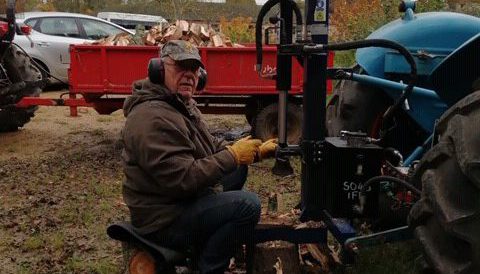 Staff Volunteer UpdatesA Day in the Life of Rick Withers – Maintenance TechnicianWednesday 20th November 2019Learn More
Staff Volunteer UpdatesA Day in the Life of Rick Withers – Maintenance TechnicianWednesday 20th November 2019Learn More
Uh Oh! You're using an old web browser
Please upgrade to a modern web browser to view this website.
Description
Sunday 28th March 2021
What topic could be of more interest to the average citizen than the weather? Britain is famed for its very changeable weather. But it’s not just a case of the rain ruining your picnic or the snow never settling for long enough to make a snowman. On a farm, the weather is critical to everything we do.
Here are a few examples:
- When the air temperature is below 5° C, the grass stops growing – but our animals don’t stop eating.
- If it rains and rains, the ground here becomes waterlogged and all those hooves can turn our heavy clay soil into a quagmire – no good for woman, man, nor beast.
- Strong, cold wind at lambing time can chill both lambs and ewes. Cold animals need to eat a lot more of our precious hay to keep warm.
Keeping a record of the weather allows us to compare different years and see if this is linked with how our animals and crops fare.
What about climate? Climate is simply the average weather conditions prevailing in an area over a long period, usually defined as being thirty years. From weather records, we know that the spring now starts earlier, and autumn arrives later than it did in the 1990s: the climate has changed. The growing season has got longer, which means we can grow more or different crops, or keep our animals out for longer, saving feed costs.
- In the good old days, people collected weather data manually; we’re very fortunate to have two Davis Vantage Pro 2 automated weather stations, which collect all the information we need without us having to lift a finger. One is located on the front lawn at Home Farm and the other is up in the woods near the treehouses. In addition to being available to us online and via a real time console, our data is also sent to the University of Reading, where it is used in scientific studies.
- So what can the different devices included in our weather station here at Home Farm tell us?
- Anemometer – a wind meter – that measures the speed and direction the wind is blowing from. Winds from the north and east tend to be colder than those from the south and west. It calculates wind chill – how cold it actually feels to be outside.
- The rain gauge measures the amount of rainfall. Is it a gentle drizzle or a cloudburst? How much rain fell overnight? We can answer these questions.
- A digital thermometer measures what the air temperature is in degrees Celsius. Is it too cool to plant out tomatoes? Was there a frost last night? With the weather station, we get the answers immediately.
- The barometer measures air pressure. Generally speaking, high pressure means stable conditions, so the weather will stay settled for a while. When the pressure drops suddenly, stormy conditions are probably on the way.
- If the air is very humid, it’s hard for sweat to evaporate, making conditions feel much hotter than the temperature alone would suggest.
Using our data, we know that the highest temperature at Home Farm in 2020 was 33.2° C, – a real scorcher.
Here at the CET, climate is important to us for another reason. In 2021 we will be opening the Fort Climate Centre, a new building which will be used to educate people about climate change and its impact on the New Forest and beyond.






